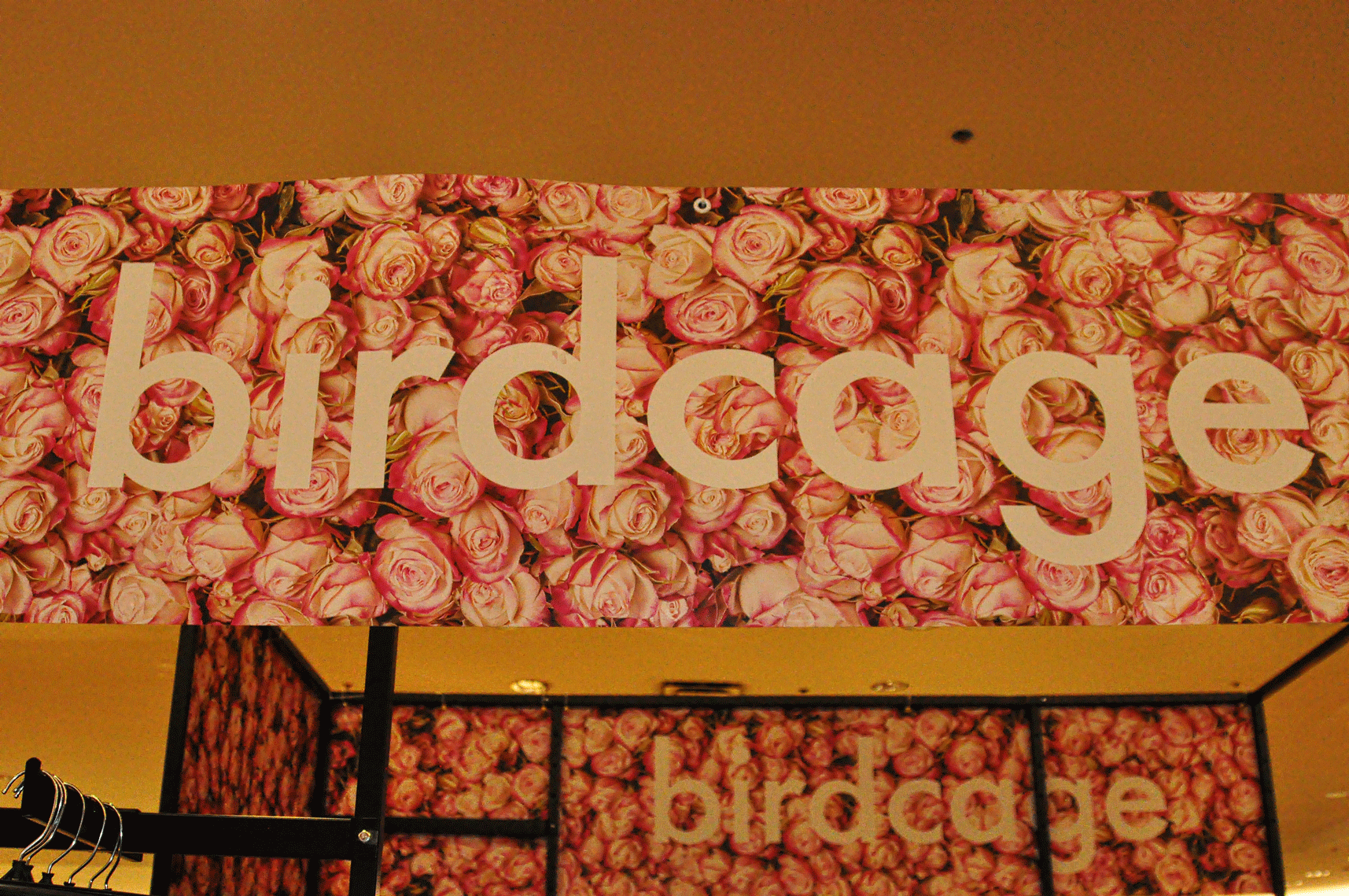Topic: COMMUNITY INTEREST

3D Breast Tomosynthesis
Not What it is Cracked Up To Be!

This article is the direct dialogue from a patient, who has a genetic ability to create microcalcification clusters, during her recent mammogram. This patient also has a rare genetic mutation. The mutation is also evident in almost everyone from her father's side of the family. They all have tested positive for the Met 30 gene.
The patient walks into the imaging center for her annual mammogram. She is actually 18 months late for her follow-up exam. She sees signs all over the waiting room, WE HAVE TOMO! As she is taken back to the room, the x-ray technician explains to her that they have a new mammo system that can do breast tomosynthesis. The patient is very well versed in this topic and says, "No, I do not want it, there is too much dose. The benefits are yet to be seen for my type of history."
The technician goes on to say," But it gives you a more complete exam. If we have to do extra pictures or magnification views , the dose from that is about the same as the tomo." The technician was extremely pushy as it pertained to the tomo. There were signs all over the office about tomo, even in the dressing room. The signs explained that if you choose to have this done there is an extra charge, a charge that insurance may not pay for. This is not a unique scenario, hospitals and breast centers that have tomosynthesis as pushing it hard.
Patient says," No, I will pass."
They go into the room and the mammogram is performed on a new GE system with tomo. No tomo is performed. At the end of the exam the technician says to the patient," I give you a lot of credit for pushing back on me about the tomo. This new system with tomo cannot see microcalcifiations. You still have to do magnification views even with the tomo. It's not a good test." If you would have said, "Yes, do the tomo." , we then have to charge you. The liklihood that your insurance would pay is unlikely. If, however, the doctor reads your films, and because this is a diagnostic mammo and not a screening mammo, says do tomo......there is no cost.
Does this make sense to you? A patient who has no idea what tomo is 9 times out of 10 has the right to order the test and be charged for it. If the doctor orders it, there is no charge. We thought this was unique for this facility. It is not. This is how it works everywhere. We called 60 sites.
So ladies, always say no......to tomo.....in the event a doctor wants to do it, let him/her order it, this way you are not charged. However, once you read this article, you will opt out of getting tomo, even if its free. Many sites have not stopped charging for it due to the fact they have seen such a decrease in patients saying yes up front. Ladies unite....just say no.
The patient then smiled at the xray technologist. Knowledge is power, less dose and the patient gets a better exam in the end. This patient also does her due diligence on who is reading her exam. You could have the best system in the world; but if a blind radiologist or someone how finished last in their class is reading your films, you could die. Every single woman who schedules her mammogram needs to ask, "Who will be reading my films that day?". They need to research the doctors and every year make sure their "wonder doc" reads their films.
The American public is being duped that this new technology, breast tomosynthesis is the best thing since sliced bread. Insurance companies are being duped, or are they? This could be why many insurance companies won't pay for it.
Digital tomosynthesis (pronounced toh-moh-SIN-thah-sis) creates a 3-dimensional picture of the breast using X-rays. Digital tomosynthesis is approved by the U.S. Food and Drug Administration, for some medical device vendors, but is not yet considered the standard of care for breast cancer screening. Because it is relatively new, it is available at a limited number of hospitals and outpatient centers. There are not many PACS (picture archiving systems) that can display the digital tomo images. It is too much data. A special workstation is needed in this case, which leashes the doctor during the reading of these exams. This creates havoc on the workflow of a hospital or imaging center.
Digital tomosynthesis of the breast is different from a standard mammogram in the same way a CT scan of the chest is different from a standard chest X-ray. Or think of the difference between a ball and a circle. One is 3-dimensional, the other is flat.
Mammography usually takes two X-rays of each breast from different angles: top to bottom and side to side. The breast is pulled away from the body, compressed, and held between two glass plates to ensure that the whole breast is viewed. Regular mammography records the pictures on film, and digital mammography records the pictures on the computer. The images are then read by a radiologist. Breast cancer, which is denser than most healthy nearby breast tissue, appears as irregular white areas — sometimes called shadows.
Mammograms are very good, but they have some significant limitations:
The compression of the breast that's required during a mammogram can be uncomfortable. Some women hate it, and it could deter them from getting the test.
The compression also causes overlapping of the breast tissue. A breast cancer can be hidden in the overlapping tissue and not show up on the mammogram.
Mammograms take only one picture, across the entire breast, in two directions: top to bottom and side to side. It's like standing on the edge of a forest, looking for a bird somewhere inside. To find the bird, it would be better to take 10 steps at a time through the forest and look all around you with each move.
Digital tomosynthesis is a new kind of test that's trying to overcome these three big issues. It takes multiple X-ray pictures of each breast from many angles. The breast is positioned the same way it is in a conventional mammogram, but only a little pressure is applied — just enough to keep the breast in a stable position during the procedure. The X-ray tube moves in an arc around the breast while 11 images are taken during a 7-second examination. Then the information is sent to a computer, where it is assembled to produce clear, highly focused 3-dimensional images throughout the breast.
Early results with digital tomosynthesis are promising. It does not work on fatty breasts at all. Yet, owners and manufacturers of these machines are aggressively marketing this test as the holy grail of cancer detection for al patients. This is not the case. Researchers believe that this new breast imaging technique will make breast cancers easier to see in dense breast tissue and will make breast screening more comfortable. This reminds me of when CAD (computerized added diagnosis) first came out for mammography. Will tomo be the new CAD? Many facilities hardly use their CAD devices anymore, they do not trust their accuracy and create more false positives. This drives up health care costs.
Why is the FDA approving this technology and allowing the behaviors to exist in the marketing of this product? Why is the FDA not doing follow up studies on these new technologies to see if they are draining the healthcare system? If they add cost and do not make a positive impact on the health of patients then why have it? Once a device is approved its approved. There is rarely follow up unless something bad happens to a patient from the device. This new technology is being actively marketed by vendors and mammography facilities as the best thing since sliced bread...however, bread it is not.
Prior to making the mammogram appointment the patient was adamant about who would read her mammogram. This is an important step in the process. If the Stevie Wonder of mammogram readers reads your films, cancer could be your next experience. The patient fully trusting the doctor who is reading her films, sat in the dressing booth awaiting her results.
The doctor came out, who is very well respected in the world of mammography and radiology said, "No additional films are needed, you are all good. This new tomo system we have cannot see microcalcifications with the tomo, its not a good technology," the doctor said.
So why can't they see the microcals using a technique that takes "slices" and dices of your breast? They cannot see the edges, they are all blurry of the calcifications. This is not good.
3d breast tomo manufacturers vary the arc of movement (typically 11-60°), the number of individual exposures (typically 9-25), use of continuous or pulsed exposure, stability or movement of the detector, exposure parameters, total dose, effective size of pixels, X-ray source/filter source, single or binned pixels, and patient position. These theoretical and engineering decisions may lead to different clinical outcomes and different reading recommendations for the different manufacturers. Of particular importance is the assessment of microcalcifications and whether one attempts to accurately depict microcalcifications by DBT. Because of the limited angle of scanning, the images are only “quasi” 3D. The x-y plane perpendicular to the x-ray beam has the highest resolution. There is less resolution in the parallel plane or z axis. One may reconstruct the data set for the radiologist to read by displaying different thicknesses. For example, if a 60 cm compressed breast is reconstructed at 1 mm thickness, there will be 60 slices for the physician to review. If the images are reconstructed at 0.5 mm thicknesses, there will be 120 images to be reviewed. If the images are reconstructed at 10 mm thick “slabs” using maximum intensity projection (MIP) thick slices, there will be 6 images to review.
This below is a snapshot from one vendors product brochure that is available on the web.
- SenoClaire uses ASiRDBT, a calcification artifact correction iterative reconstruction algorithm that delivers off-plane images much improved in terms of both in-plane and out-of-plane artifacts versus the traditional Filtered Back Projection (FBP) algorithm.
- SenoClaire’s 3D MLO sequence requires only nine exposures with an even distribution of the dose.
- The SenoClaire grid in 3D reduces scattered radiation while preserving dose and performance.
- The dual-track X-ray tube (Mo/Rh) delivers optimized X-ray spectra to penetrate the breast based on breast density and compressed breast thickness. Automatic Optimization of Parameters (AOP) helps you identify the densest breast regions and automatically selects the appropriate anode, filter, kV and mAs to ensure repeatable image quality at optimized radiation dose.
The dose is the same for each of the 9 exposures the systems takes. This is radically unacceptable. The system can only evaluate the breast in that instant of the exposure. A standard technique and dose is used, no matter that the issue characteristics are at each angle that the system takes a picture. Again, this is radically unacceptable. The exposure is cut off prematurely to rush to the next exposure. God knows what data is actually collected. The systems specifications go on to say that they use Mo/Rh to best optimize the spectra, based on breast density and compressed thickness. This is a target filter combination utilized in mammography. The Mo/Rh will not correct for the use of the same dose for each angled projection. There are many target filter combinations used in mammography, Mo-Mo, Mo-Rh, W/Rh, etc.
This technology at best is completely contradictory and incomplete. A woman should not be subjecting herself to unnecessary dose to say, "I got my 3d mammo." This is not to point the finger at one vendor, all of the systems currently in clinical use demonstrate these same type of contradictory, incomplete characteristics. The global public has been tricked into thinking 3d tomo for mammo is and should be standard practice. The mammmography facilities are pushing this hard.
A major consideration for DBT (digital breast tomosynthesis) manufacturers and regulators is the balance between dose and image quality. Because image quality tends to be directly related to dose, compromises are necessary. All manufacturers have produced equipment with dosing parameters less than current FDA limit of 300 millrads per exposure. Common conventional mammographic dose per view is 150-250 millirads. However, achieving lower doses is optimal. Variations in target filter, breast thickness, and breast density further complicate this analysis. However, if DBT could lead to reduction in recall rate or improvement in sensitivity and specificity, a minimally higher dose may be acceptable.
Reconstruction techniques include shift-and-add, tuned aperture computed tomography, matrix inversion, filtered back projection, maximum likelihood reconstruction, and simultaneous algebraic reconstruction technique. Certain reconstruction methods may be better for masses and other methods better for calcifications. They use one algorithm for all types of tissue, which is not stellar.
These are old techniques, where is the innovation> Once an facility decides to invest in the technology (there 3D technology is creating quite the competitive market between facilities, they feel as if they have to have it to get patients) they are biased to use the machine.
There is also only one algorithm used in the post processing of the images for all types of tissue with DBT. This is not optimal either. The problem is "scale-space". Scale-space theory is a framework for multi-scale signal representation developed by the computer vision, image processing and signal processing communities with complementary motivations from physics and biological vision. It is a formal theory for handling image structures at different scales, by representing an image as a one-parameter family of smoothed images.
The creators of these machines need a matched filter for each scale of concern, from tiny microcalcifications to bigger calcifications to smaller masses to larger masses - the optimal filter varies as a function of size. This is not what the current machines can do. None of them. So what use is the technology? Corporations have spent millions of dollars to develop systems that are not optimal.
There are other technologies on the horizon that use honey-combed detectors, and other types of imaging, including the use of contrast, that have demonstrated in research some promising results. The current technologies and those in the works utilize a detector that have 50, 70 or 100 micron resolution in size. None of which are useful for 3d breast tomo. One cannot obtain the crystal clear margins of a microcalcification using tomo at 50,70 and 100 micron resolution. There is some promise with contrast enhancement and spectral imaging, but its too early to say whether this is useful technology. However, there needs to be absolute proof that the true positive and true negative performance of the contrast enhanced systems are in comparison with (or in combination with) other settings/modalities.
One manufacturer is focused on spectral breast density measurements. A published white paper demonstrates that the results of the phantom study suggest that photon counting spectral mammography systems may potentially be implemented for an accurate quantification of volumetric breast density; the study resulted in a root-mean-square (RMS) error of less than 2%, using the proposed spectral imaging technique.
Accurate density estimation (purported risk estimation) is an intermediate goal. The end goal remains high accuracy: true positives and true negatives. The intermediate goal may bias a decision not to investigate further (save a buck where possible), but the end goal is the holy grail,isn't it? I would want to see a benefit of using the former to get to the latter. An alternative may be - go directly for the latter.
It is the shared goal is to save the most lives possible from breast cancer, the American College of Radiology (ACR) and Society of Breast Imaging (SBI) continue to recommend that women get yearly mammograms starting at age 40. New American Cancer Society (ACS) breast cancer screening guidelines, and previous data used by the United States Preventive Services Task Force (USPSTF) to create their recommendations, state that starting annual mammography at age 40 saves the most lives.
“The ACS has strongly reaffirmed that mammography screening saves lives. The new ACS guidelines show that if a woman wants to reduce, as much as possible, her risk of dying of breast cancer, she will choose yearly mammography starting at age 40. A recent study in the British Medical Journal confirms this, showing that early detection of breast cancer is critical for improving breast cancer survival, regardless of therapy advances. Moving away from annual screening of women ages 40 and older puts women’s lives at risk,” said Debra Monticciolo, MD, FACR, chair of the American College of Radiology Breast Imaging Commission.
The ACR and SBI agree with the ACS and others that overdiagnosis claims are vastly inflated due to key methodological flaws in many studies. Overdiagnosis is likely 1 to 10 percent — largely due to inclusion of ductal carcinoma in situ (DCIS). Few, if any, invasive cancers are over-diagnosed.
Pulished research shows that nearly all women who experience a false-positive exam endorse regular screening and want to know their status. The ACR and SBI agree with ACS that women 40 and older should have access to mammograms. We also recommend that women, 40 to 45, get screened and would expect that mammography critics would agree that Medicare and private insurers should be required to cover women 40 and older for these exams,” said SBI President, Elizabeth Morris, MD, FACR.
While ACS states that transitioning to biennial screening is an option for older women, they note that either one or two year intervals would be appropriate as a woman ages. The ACR and SBI strongly encourage women to obtain the maximum lifesaving benefits from mammography by continuing to get annual screening.
The ACR and SBI commend ACS for using the modern IOM guideline development process — which is more trustworthy than the antiquated USPSTF methods. The ACS performed an extensive evidence review, including randomized control trials, population-based observational studies, case-control studies and cohort studies. This goes beyond the USPSTF limited review of only selected studies that underestimate the lifesaving benefit of mammography screening. Many of those studies were decades old and used what would now be considered outdated equipment.
The ACS included individuals on its panel who have experience in breast cancer and sought input from breast cancer experts. The USPSTF methodology lacks transparency, has limited input from cancer experts and does not engage all stakeholders which are needed to form meaningful and trustworthy guidelines.
Reading mammograms is about picking out malignant abnormalities from a sometimes confusing field of patches and threads and spots. In up to 1 in 2 women, dense tissue makes it even more difficult.
Women with dense breast tissue — the sort that can hide potentially deadly tumors from routine mammograms — must be notified in writing and encouraged to consider additional tests under a new state law that is effective Monday.
While mammograms remain the gold standard for detecting breast tumors, they're less reliable in almost half of women with dense breast tissue. Dense or fibrous tissue shows up as splotches of white on a mammogram — so do tumors.
Digital breast tomosynthesis (DBT) is a new technique in the clinical breast imaging armamentarium that uses low-dose images obtained at multiple angles to reconstruct thinslice images through the breast. The Selenia Dimensions (Hologic) received United States Food and Drug Administration (FDA) approval on February 11, 2011, and other manufacturers are also developing breast tomosynthesis equipment.
Implementation of DBT into a clinical breast imaging practice requires consideration of image acquisition, interpretation, storage, technologist and radiologist training, patient selection, billing, radiation dosage, and marketing.
Patient positioning and breast compression are similar to conventional mammography. For each projection, the technologist positions the patient’s breast in mammographic compression just as for conventional mammography. The patient is instructed to hold her breath, and the x-ray tube source moves through a 15° arc with pulsed exposures to acquire 15 low-dose projection images, moving 1° between each projection image. One tomosynthesis unit uses a tungsten anode and aluminum filtration to obtain these 15 low-dose projection images. This takes approximately 4 seconds, and the grid is out during acquisition of the projection images. While the breast remains in compression, the patient is instructed to breathe out as the grid is returned and to breathe in and hold her breath while the conventional 2D full-field digital mammography (FFDM) image is acquired using a tungsten anode and rhodium filtration. For larger breasts, silver filtration is used for the FFDM images to provide better penetration without increasing exposure time. The compression paddle automatically releases and the patient is instructed to breathe normally. The entire process for acquisition of the 15 projection images and the conventional 2D image takes approximately 12 seconds, not significantly longer than the time required to perform FFDM alone. The technologist then positions the patient’s breast in compression for the next view. For a bilateral screening mammogram incorporating tomosynthesis, the patient is positioned and compressed four times to create bilateral craniocaudal and bilateral mediolateral oblique views using both tomosynthesis and conventional 2D FFDM imaging. With tomosynthesis, the use of radiopaque markers on skin lesions or nipples that are not in profile is no longer necessary. Some practices exclude women with implants from undergoing tomosynthesis imaging. Interpretation of DBT Images Raw data from the 15 tomosynthesis projection images obtained in each projection (craniocaudal and mediolateral oblique projections bilaterally) are reconstructed into a stack of tomosynthesis slices separated by 1 mm and oriented parallel to the plane of the mammography machine’s platform. These tomographic slices are displayed on the tomosynthesis vendor’s proprietary workstation for interpretation. The radiologist can scroll through each stack of images manually or in a dynamic cine mode. The number of tomosynthesis slices for interpretation is equal to the thickness of the patient’s breast in compression plus five. Five additional slices are added on the compression paddle side of each stack of images to ensure that the entire breast is imaged because the compression paddle’s location is mobile to accommodate various-sized breasts. On the platform-receptor side of the stack, no additional slices are necessary because the platform-receptor’s location is fixed. This is important to understand to avoid misinterpreting a skin lesion on the cranial aspect of the breast (in craniocaudal projection) as an ovoid asymmetry within the breast tissue because it will occur five slices “into” the top of the tomosynthesis stack. The slice on which the caves of Kopans and Rusby are in focus identifies the skin surface. This can also occur on the superomedial aspect of the breast in mediolateral oblique projections. Not surprisingly, radiologists require additional time to interpret the tomosynthesis images in addition to conventional FFDM images.
A prospective study of 10 radiologists with at least 17 months of experience using DBT in their clinical practice found that DBT plus FFMD interpretation required an average of 47% longer than the time needed to interpret FFDM alone in a clinical screening mammography setting. Another study found an average reading time of 77 seconds for DBT examinations versus 33 seconds for FFDM examinations and a third reported 91 seconds for DBT plus FFDM versus 45 seconds for FFDM alone. This approximate doubling of interpretation times must be considered before a practice implements DBT.
Although interpretation time for mammography using DBT plus FFDM increases relative to interpretation time for FFDM alone, the reduction in recall rates when DBT plus FFDM is used [3–5] decreases the amount of time that radiologists devote to interpreting the recall examinations from a given population of screening patients. This can be considered “time accounted” to compensate for the increased reading time required to interpret the screening mammograms of that population using DBT plus FFDM. When an interpreting radiologist annotates an area of concern on a DBT slice, a screen capture of that slice is sent to the PACS and is displayed as an additional single annotated tomosynthesis slice. There is no currently commercially available computer-assisted detection system for DBT imaging. Conventional mammographic computer-assisted detection is available on the 2D FFDM images from combination imaging
In accordance with Mammography Quality Standards Act (MQSA) requirements, radiologists must undergo 8 hours of training in this new technology before interpreting DBT images independently. Several continuing medical education companies now offer the required 8 hours of DBT training.







